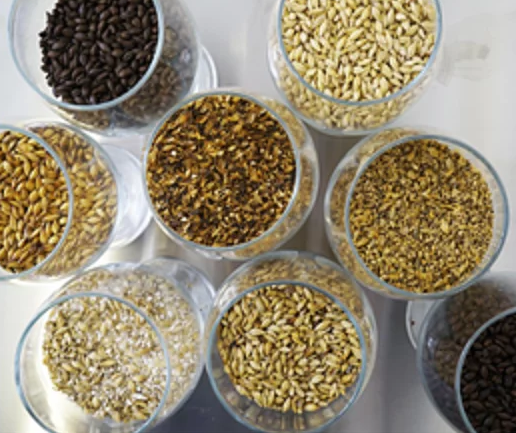Imperial stouts for JK are best when they’re big, bitter, complex and full bodied, the best examples hide their strength and remain drinkable. Below are some tips and things JK has learnt and used over the years that have provided him with great results when brewing this beer style.
WATER:
There’s two popular theories around about water composition for stouts. One focuses on the chloride to sulphate ratio, and the other emulates the water from classic stout producing regions like London or Dublin. One thing’s for sure, if you don’t think about adjusting your water you run the risk of astringency in the finished beer, dark malts are acidic and unless the water is adjusted to cater for this your beer will have an undesirable harshness.
There’s merit to both viewpoints so he take elements from both and adjusts his water to fit this profile:
Ion ppm
Ca 69
Mg 7
CI 84
Na 84
SO4 45
HCO3 221
CaCO3 181
MALT:
With his water profile nailed JK decided on an ABV range that he’d like to hit and then looks at what malts will work. Hes had high ABV stouts that seemed a little like high alcohol blackwater, he prefers big malt chewiness and complexity so he gets into the specialty malts in a big way.
There are some constants with any stout, he always uses these four as a base: chocolate malt, roasted barley, crystal malt and a pale ale malt. With these providing a thick malty backbone he then adds some of his favourite malts, these are Dark Crystal, Munich, Black Malt, Brown Malt and Amber – He has had good results using liquid malt extract here too. As a rule of thumb he always uses a minimum of 7 malts, any less and he finds complexity is compromised.
For example, the last stout he brewed was:
64% Pale Ale Malt
10% Munich
9% Brown Malt
4.4% Roasted Barley
4.1% Dark Crystal
3.7% Chocolate Malt
3.7% Amber
1.1% Black Malt
The key is to strike a balance between complexity and fermentability, JK likes his stouts complex but try not to exceed 25% non diastatic malts, too many specialty malts and the attenuation will suffer.
SUGAR:
A great way to increase ABV, attenuation and drinkability, JK uses up to a maximum of 5% Belgian Candy or Muscavado Sugar adjusting his mash time and temperature to compensate. If he’s not using sugar he will mash in at 63-64°C and utilize a mash time of at least 90minutes.
HOPS:
JK likes subtle aroma and flavour hops just enough to support the malts and give background depth to the beer without dominating. The varieties to use will depend on your malt bill but in general terms they should be high alpha, high oil content hops.These beers age really well and patience will be rewarded, JK likes to age his for a minimum of six months to smooth out the flavours so by the time he gets to drink them they’ve lost almost all of their hop character. JK has utilised dry hopping before to aid drinkability in a young imperial stout but if you have the patience you will get a better result just aging them a bit more.Bitterness is another story though, cloying and sweet stouts are not for him, JK likes to have a decent bitterness so he works to a bitterness unit to gravity unit ratio of at least 0.8.
YEAST:
Don’t be obsessed with a final gravity of 1010, some of the yeast attenuation percentages quoted are theoretical so don’t leave your beer on the yeast waiting for it to reach this, keep your gravity checks regular and when it’s finished fermenting get it off the yeast. Even if you pitch the right amount of yeast and you’re aware of the limitations of your maltbill an end gravity of 1.030 is possible purely because of the dextrinous malts you’ve added to your mash. JK always aim for an end gravity of 1020-30 on big imperial stouts because he knows that they’re going to be full bodied and malty.
As always the best way to learn is to experiment, so do a brew, take some notes, see what you like and let us know how you get on.
